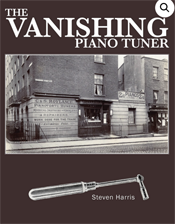Mr. S. Seekings with over 35 years of experience in piano tuning and piano repairs provides the following services in all of North Norfolk:
:
• Tuning in Homes, Schools, Theatres and Concerts Venues
• Minor on site repairs
• Replace broken strings
• Advice on purchasing a new or second-hand piano
• Valuation
• Piano Sales
Towns and villages we cover:
Aldborough Antingham Aylsham Bacton Bale Bawdeswell Beeston Binham Bintree Blakeney Bodham Booton Brampton Brancaster Staithe Briningham Brinton Brisley Briston Burnham Market Burnham Thorpe Cawston Colkirk Coltishall Corpusty Costessey Dilham Docking Drayton East Bilney East Dereham East Raynham East Rudham East Runton Edgefield Edingthorpe Elsing Fakenham Felbrigg Felmingham Felthorpe Flitcham Foulsham Foxley Fulmodestone Gayton Gimingham Great Massingham Great Ryburgh Great Snoring Great Walsingham Gresham Gressenhall Guestwick Gunthorpe Happisburgh Heacham Hempton Hickling High Kelling Hindolveston Hindringham Hockering Holme Holt Kettlestone Lamas Langham Litcham Little Plumstead Little Snoring Ludham Lyng Marsham Matlaske Melton Constable Mundesley Neatishead North Creake North Elmham North Tuddenham North Walsham Northrepps Overstrand Paston Plumstead Potter Heigham Rackheath Reepham Ridlington Ringstead Roughton Salhouse Salle Saxthorpe Sculthorpe Sea Palling Shernborne South Creake South Raynham South Walsham Southrepps Spixworth Stalham Stanhoe Stibbard Stiffkey Suffield Sustead Swafield Swanton Abbott Swanton Morley Swanton Novers Syderstone Tasburgh Tattersett Taverham Thornage Thornham Thorpe Market Thurning Thursford Titchwell Trimingham Trunch Tunstead Tuttington Upper Sheringham Walcott Wells-next-the-Sea West Newton West Raynham West Runton Weybourne Whissonsett Wighton Witton Wood Dalling Wood Norton Woodbastwick Worstead
:



